负载均衡-一致性Hash算法
1. Hash算法
哈希(Hash)也称为散列,把任意长度的输入,通过散列算法变换成固定长度的输出,该输出就是散列值、哈希值(hashCode)。(来自:百度百科)
在现实中,设计者常常将散列值作为索引,用于快速定位数据的位置,比如 HashMap :
// cache => key:userId, value:phone
Map<String, String> cache = new HashMap<>();
cache.put("user:001","159xxxx0001");
cache.put("user:002","159xxxx0002");
cache.put("user:003","159xxxx0003");
// 查询 "user:001" 的手机号
String phone = cache.get("user:001");
为了引入一致性Hash算法,我需要举个例子:

现在 A公司 发展良好,上亿的用户量,架构师设计出一个方案:根据用户id分库,通过对用户id进行Hash运算,计算出一个散列值,来决定用户数据存储在哪一个节点。
由此出现一个问题,怎么才能保证数据均匀分布在各个节点?假如全部数据都存储在 节点1 这个分库就是失败的,和不分库一模一样不是吗?这种状况专业术语叫数据倾斜。
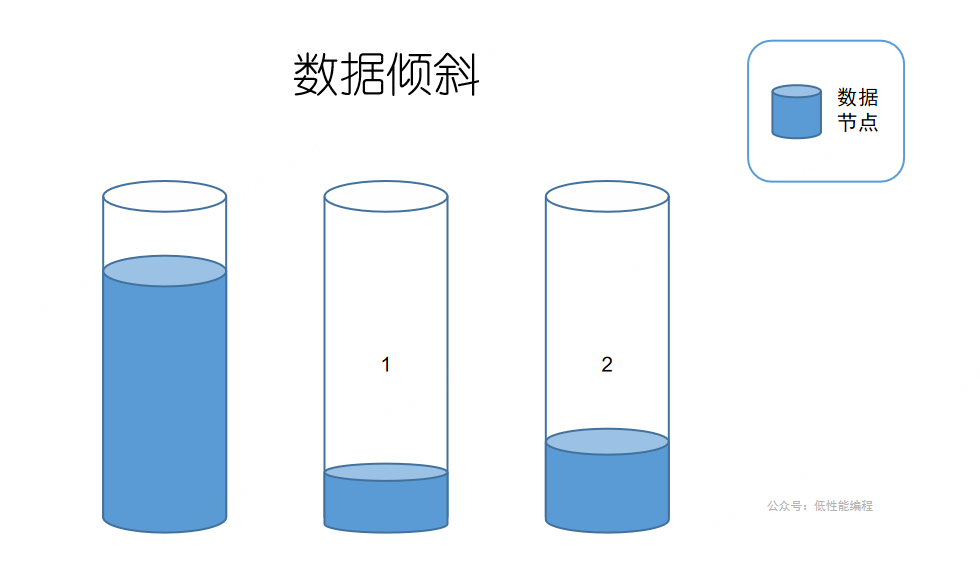
那怎么才能均匀存储在各个节点呢?答案是 1.选择合适的数据作为key、2.设计优秀的散列函数。

跑题了,今天要讲的是负载均衡。
下文举例中,hash算法选最简单的取余法,方便理解
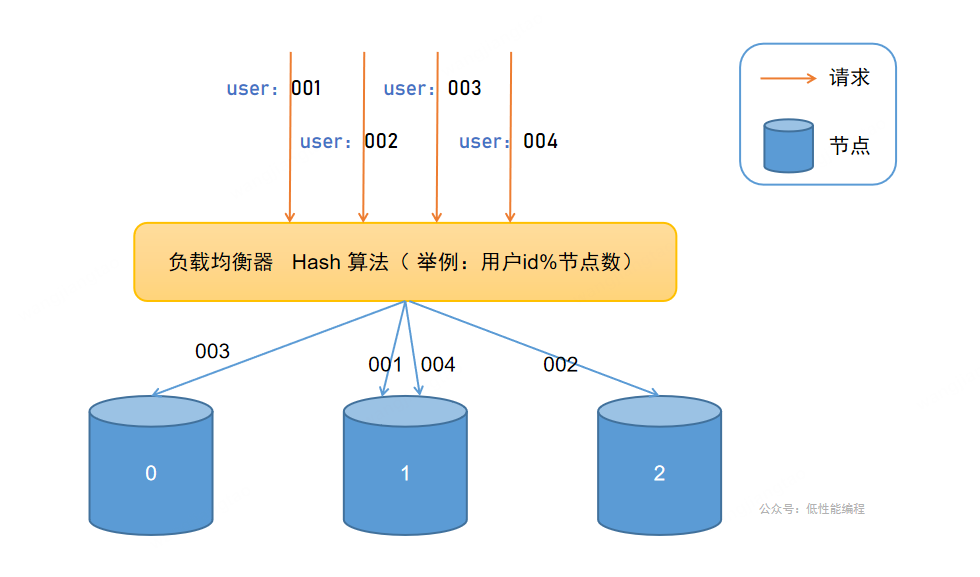
如图所示、显然、易得,上图中,有四个请求,有三个节点,我们该怎么让请求均匀的打在节点上?这是不是和上面根据用户ID分库的栗子有共同之处,首先需要选择一个合适的数据当作key,还有一个优秀的散列函数,但是这很难很好的实现。
问题1:如何让请求均匀命中节点?
如果我现在加一个节点,user:004将会映射在 节点0上(注:4%4=0),由于user:004以前将数据存储在节点1,那么将查询不到 user:004的数据。
问题2:如何解决动态增加、减少节点带来的问题?
2. 一致性Hash算法
背景之类的东西就跳过了。
上面的散列函数是用户id%节点数,节点数是会动态增减的,那我们把节点数设置为一个固定的大数(2^32),这样就解决了动态增加、减少节点带来的问题。

再上图:
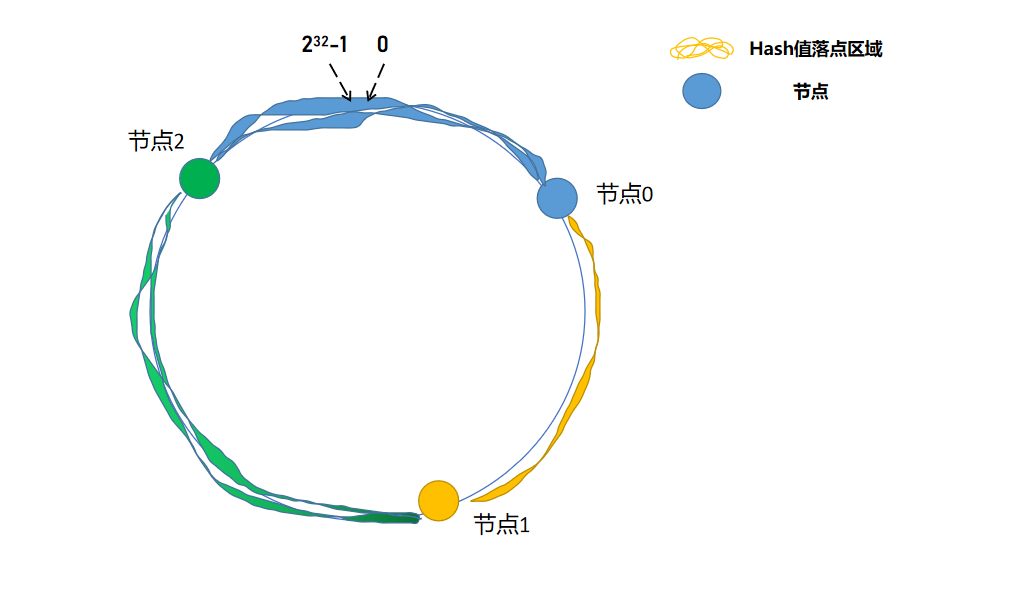
解释一下,就是将散列函数变为 用户id % ,如果散列值落在 节点0 与 节点1 之间,那么我们选择 节点1 ,同理,如果落在 节点1 与 节点2 之间,我们选择 节点2 ,我们也称这个环为Hash环。
服务器减少:

节点1 挂掉后,其余节点依旧能正常工作,只不过原本打在 节点1 的请求,按照逻辑,打在了 节点2 上,所以需要将 节点1 的数据全部分配在节点2,这可能造成 节点2 短时间接收大量请求,节点2 也挂掉,然后导致请求全部打在 节点0,从而形成雪崩效应,全部节点挂掉。
服务器增加:

增加 节点4 , 只需将原本在 节点2 的部分数据重新分配在 节点4 。
上面解决了,增加节点与减少节点,节点数据的问题,但是没解决一个问题就是,数据倾斜的问题。
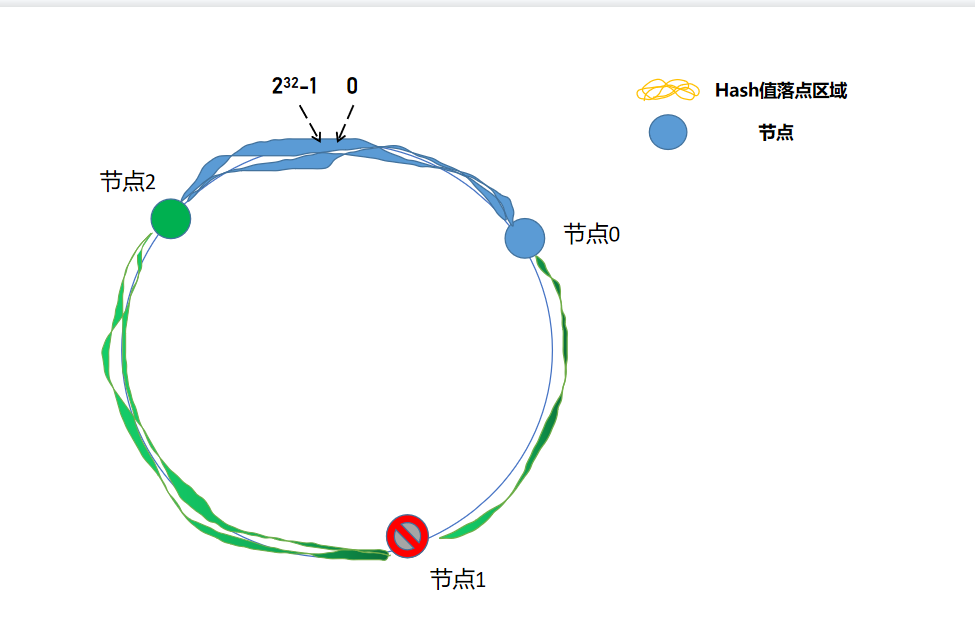
如这图,存储在 节点2 的数据概率远多于 节点0,根据概率论,极大可能会造成数据倾斜问题。
解决这个办法的问题是:添加虚拟节点。
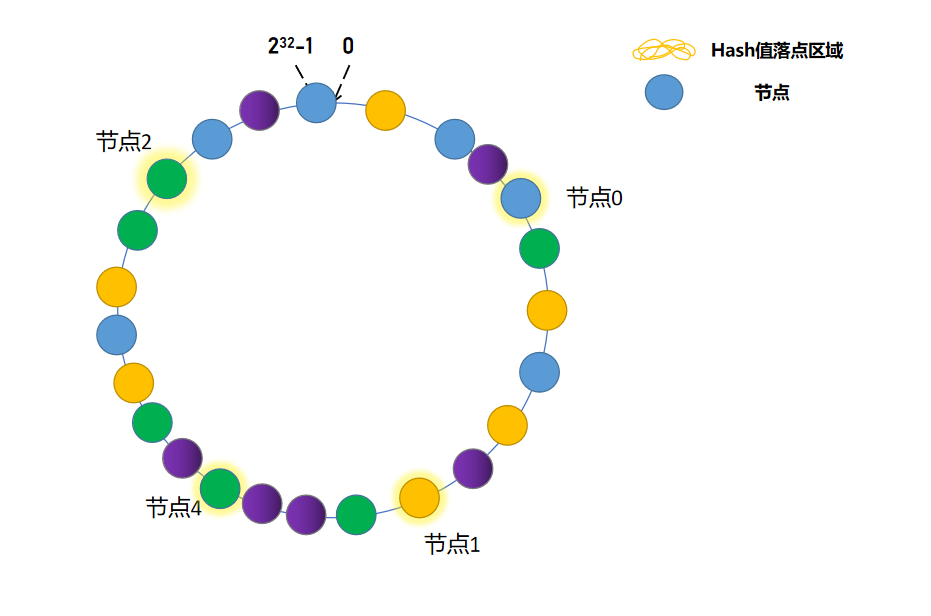
发光的节点为真实节点,不发光节点为虚拟节点,这样一操作,眼睛看着都均匀了,当然虚拟节点越多越均匀(概率论问题),假如请求命中虚拟节点,会将请求转发至真实节点,不理解了吧。
// 返回一个键大于等于给定键的最小键值对的Entry对象。如果没有这样的键值对存在,则返回null。
Map.Entry<Long, Invoker<T>> entry = virtualInvokers.ceilingEntry(hash);
看个源码吧:
/*
* Licensed to the Apache Software Foundation (ASF) under one or more
* contributor license agreements. See the NOTICE file distributed with
* this work for additional information regarding copyright ownership.
* The ASF licenses this file to You under the Apache License, Version 2.0
* (the "License"); you may not use this file except in compliance with
* the License. You may obtain a copy of the License at
*
* http://www.apache.org/licenses/LICENSE-2.0
*
* Unless required by applicable law or agreed to in writing, software
* distributed under the License is distributed on an "AS IS" BASIS,
* WITHOUT WARRANTIES OR CONDITIONS OF ANY KIND, either express or implied.
* See the License for the specific language governing permissions and
* limitations under the License.
*/
package org.apache.dubbo.rpc.cluster.loadbalance;
import org.apache.dubbo.common.URL;
import org.apache.dubbo.common.io.Bytes;
import org.apache.dubbo.rpc.Invocation;
import org.apache.dubbo.rpc.Invoker;
import org.apache.dubbo.rpc.support.RpcUtils;
import java.util.List;
import java.util.Map;
import java.util.TreeMap;
import java.util.concurrent.ConcurrentHashMap;
import java.util.concurrent.ConcurrentMap;
import static org.apache.dubbo.common.constants.CommonConstants.$INVOKE;
import static org.apache.dubbo.common.constants.CommonConstants.COMMA_SPLIT_PATTERN;
/**
* ConsistentHashLoadBalance
*/
public class ConsistentHashLoadBalance extends AbstractLoadBalance {
public static final String NAME = "consistenthash";
/**
* Hash nodes name
*/
public static final String HASH_NODES = "hash.nodes";
/**
* Hash arguments name
*/
public static final String HASH_ARGUMENTS = "hash.arguments";
private final ConcurrentMap<String, ConsistentHashSelector<?>> selectors = new ConcurrentHashMap<String, ConsistentHashSelector<?>>();
@SuppressWarnings("unchecked")
@Override
protected <T> Invoker<T> doSelect(List<Invoker<T>> invokers, URL url, Invocation invocation) {
// dubbo 把节点包装成Invoker,invokers 就相当于节点列表
String methodName = RpcUtils.getMethodName(invocation);
// eg. com.example.service.getUser 每个方法,对应一个selector
String key = invokers.get(0).getUrl().getServiceKey() + "." + methodName;
// invokers.hashCode() 也就说是节点列表的HashCode
int invokersHashCode = invokers.hashCode();
ConsistentHashSelector<T> selector = (ConsistentHashSelector<T>) selectors.get(key);
// 如果selector==null,说明还未初始化,如果selector.identityHashCode != invokersHashCode,说明增加或者减少了节点。
if (selector == null || selector.identityHashCode != invokersHashCode) {
selectors.put(key, new ConsistentHashSelector<T>(invokers, methodName, invokersHashCode));
selector = (ConsistentHashSelector<T>) selectors.get(key);
}
return selector.select(invocation);
}
private static final class ConsistentHashSelector<T> {
private final TreeMap<Long, Invoker<T>> virtualInvokers;
private final int replicaNumber;
private final int identityHashCode;
private final int[] argumentIndex;
ConsistentHashSelector(List<Invoker<T>> invokers, String methodName, int identityHashCode) {
// 虚拟节点Map
this.virtualInvokers = new TreeMap<Long, Invoker<T>>();
// ConsistentHashSelector 的唯一标识,假如增加、减少节点,那么唯一标识会发生改变
this.identityHashCode = identityHashCode;
URL url = invokers.get(0).getUrl();
// 虚拟节点数,默认160
this.replicaNumber = url.getMethodParameter(methodName, HASH_NODES, 160);
String[] index = COMMA_SPLIT_PATTERN.split(url.getMethodParameter(methodName, HASH_ARGUMENTS, "0"));
argumentIndex = new int[index.length];
for (int i = 0; i < index.length; i++) {
argumentIndex[i] = Integer.parseInt(index[i]);
}
// 将虚拟节点放进virtualInvokers
for (Invoker<T> invoker : invokers) {
String address = invoker.getUrl().getAddress();
// 俩个循环,总共 replicaNumber 个虚拟节点,这样做为了让虚拟节点分布更均匀
for (int i = 0; i < replicaNumber / 4; i++) {
byte[] digest = Bytes.getMD5(address + i);
for (int h = 0; h < 4; h++) {
long m = hash(digest, h);
virtualInvokers.put(m, invoker);
}
}
}
}
public Invoker<T> select(Invocation invocation) {
boolean isGeneric = invocation.getMethodName().equals($INVOKE);
String key = toKey(invocation.getArguments(),isGeneric);
byte[] digest = Bytes.getMD5(key);
return selectForKey(hash(digest, 0));
}
private String toKey(Object[] args, boolean isGeneric) {
return isGeneric ? toKey((Object[]) args[1]) : toKey(args);
}
private String toKey(Object[] args) {
StringBuilder buf = new StringBuilder();
for (int i : argumentIndex) {
if (i >= 0 && args != null && i < args.length) {
buf.append(args[i]);
}
}
return buf.toString();
}
private Invoker<T> selectForKey(long hash) {
// 返回一个键大于等于给定键的最小键值对的Entry对象。如果没有这样的键值对存在,则返回null。
Map.Entry<Long, Invoker<T>> entry = virtualInvokers.ceilingEntry(hash);
if (entry == null) {
entry = virtualInvokers.firstEntry();
}
return entry.getValue();
}
// hash环2^32体现在这里,0xFFFFFFFFL = 2^32 - 1,说明 hash值只能取到0 ~ 2^32-1
private long hash(byte[] digest, int number) {
return (((long) (digest[3 + number * 4] & 0xFF) << 24)
| ((long) (digest[2 + number * 4] & 0xFF) << 16)
| ((long) (digest[1 + number * 4] & 0xFF) << 8)
| (digest[number * 4] & 0xFF))
& 0xFFFFFFFFL;
}
}
}
3. 总结
Hash算法: 用户id % 节点数,常被当作索引,用来快速定位数据,但是在负载均衡这个问题上,存在容易导致数据倾斜、动态增减节点的问题。
一致性Hash算法,通过将Hash环分为2^32个插槽,巧妙利用虚拟节点,提供了解决数据倾斜、动态增减节点的思路。
本文来自博客园,作者:帅气的涛啊,转载请注明原文链接:https://www.cnblogs.com/handsometaoa/p/18074110




【推荐】国内首个AI IDE,深度理解中文开发场景,立即下载体验Trae
【推荐】编程新体验,更懂你的AI,立即体验豆包MarsCode编程助手
【推荐】抖音旗下AI助手豆包,你的智能百科全书,全免费不限次数
【推荐】轻量又高性能的 SSH 工具 IShell:AI 加持,快人一步
· 无需6万激活码!GitHub神秘组织3小时极速复刻Manus,手把手教你使用OpenManus搭建本
· C#/.NET/.NET Core优秀项目和框架2025年2月简报
· Manus爆火,是硬核还是营销?
· 终于写完轮子一部分:tcp代理 了,记录一下
· 【杭电多校比赛记录】2025“钉耙编程”中国大学生算法设计春季联赛(1)
2022-03-14 十亿手机号去重-BitSet